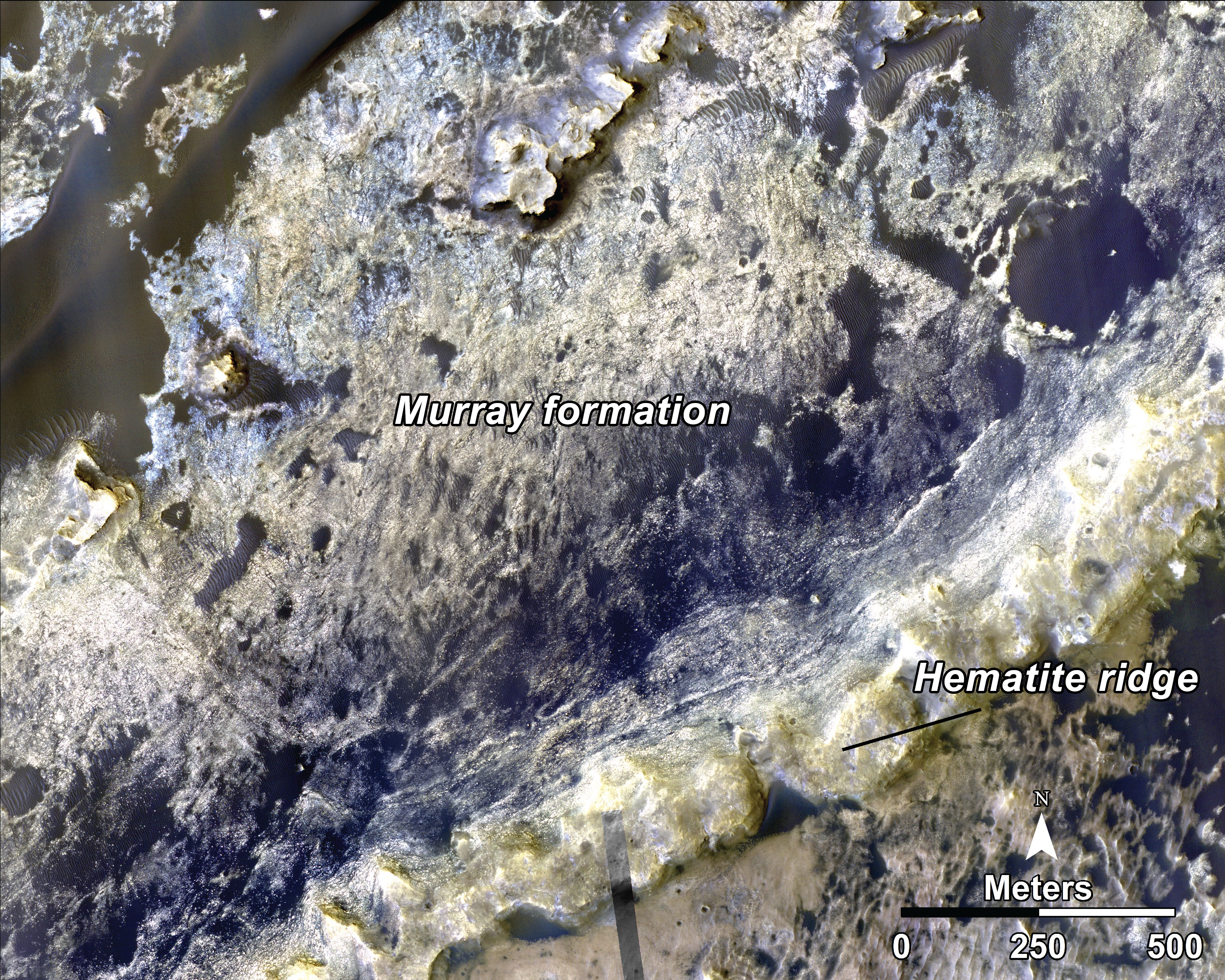Murray Formation on:
[Wikipedia]
[Google]
[Amazon]
 The Murray Formation is the name given to a distinctive mudstone geologic formation studied by the
The Murray Formation is the name given to a distinctive mudstone geologic formation studied by the
 The Murray Formation is the name given to a distinctive mudstone geologic formation studied by the
The Murray Formation is the name given to a distinctive mudstone geologic formation studied by the Mars Science Laboratory
Mars Science Laboratory (MSL) is a robotic space probe mission to Mars launched by NASA on November 26, 2011, which successfully landed ''Curiosity'', a Mars rover, in Gale Crater on August 6, 2012. The overall objectives include investigati ...
(MSL) Curiosity
Curiosity (from Latin '' cūriōsitās'', from ''cūriōsus'' "careful, diligent, curious", akin to ''cura'' "care") is a quality related to inquisitive thinking such as exploration, investigation, and learning, evident by observation in humans ...
at the Gale Crater
Gale is a crater, and probable dry lake, at in the northwestern part of the Aeolis quadrangle on Mars. It is in diameter and estimated to be about 3.5–3.8 billion years old. The crater was named after Walter Frederick Gale, an amateur ast ...
, Mars
Mars is the fourth planet from the Sun and the second-smallest planet in the Solar System, only being larger than Mercury. In the English language, Mars is named for the Roman god of war. Mars is a terrestrial planet with a thin at ...
.
Stratigraphy
The formation is more than thick and is part of the Mount Sharp Group which interfingers with units of the Bradbury Group. The formation is composed mostly ofbasaltic
Basalt (; ) is an aphanitic (fine-grained) extrusive igneous rock formed from the rapid cooling of low-viscosity lava rich in magnesium and iron (mafic lava) exposed at or very near the surface of a rocky planet or moon. More than 90% of a ...
minerals plus clay
Clay is a type of fine-grained natural soil material containing clay minerals (hydrous aluminium phyllosilicates, e.g. kaolin, Al2 Si2 O5( OH)4).
Clays develop plasticity when wet, due to a molecular film of water surrounding the clay par ...
s, though an intermediate horizon contains tridymite
Tridymite is a high-temperature polymorph of silica and usually occurs as minute tabular white or colorless pseudo-hexagonal crystals, or scales, in cavities in felsic volcanic rocks. Its chemical formula is Si O2. Tridymite was first describe ...
, cristobalite
Cristobalite is a mineral polymorph of silica that is formed at very high temperatures. It has the same chemical formula as quartz, SiO2, but a distinct crystal structure. Both quartz and cristobalite are polymorphs with all the members of the ...
, quartz
Quartz is a hard, crystalline mineral composed of silica ( silicon dioxide). The atoms are linked in a continuous framework of SiO4 silicon-oxygen tetrahedra, with each oxygen being shared between two tetrahedra, giving an overall chemical ...
and opal
Opal is a hydrated amorphous form of silica (SiO2·''n''H2O); its water content may range from 3 to 21% by weight, but is usually between 6 and 10%. Due to its amorphous property, it is classified as a mineraloid, unlike crystalline form ...
.
The Murray formation has five named subunits, i.e. Pahrump Hills Member, Hartmann's Valley Member, Karasburg Member, Sutton Island Member, Vera Rubin Ridge Member. It unconformably underlies the Stimson formation.
References
Geology of Mars {{Mars-stub